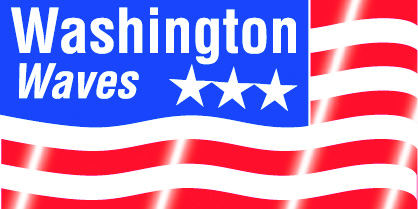Top leaders of a key House committee unveiled a bipartisan bill to provide the “most robust legislative reform” of the Federal Emergency Management Agency (FEMA) in decades.
H.R. 4669, the Fixing Emergency Management for Americans Act of 2025, would streamline the federal government’s disaster response and recovery programs, make FEMA a cabinet-level agency directly accountable to the president, reward effective state and local preparedness efforts and cut red tape.
Introduced by Rep. Sam Graves (R-Mo.), chair of the House Transportation and Infrastructure Committee, the measure is co-sponsored by Rep. Rick Larsen (D-Wash.), the panel’s ranking member, and other leading members. The bill was introduced weeks after the FEMA Review Council, which was appointed by President Donald Trump, launched its effort to produce an assessment of FEMA’s response to disasters and recommendations on reforming the agency. That report is expected before the end of the year.
Ready Reserve Force
Transportation Secretary Sean Duffy announced the Maritime Administration (MarAd) has signed 20 contracts totaling $6.2 billion to manage its Ready Reserve Force (RRF), moving one step closer to fulfilling the president’s executive order on restoring U.S. maritime dominance.
Through MarAd, the RRF provides strategic sealift support for the rapid deployment of U.S. military forces and equipment during conflicts, crises and emergencies.
“When our military is called to respond, the RRF delivers the tanks, the trucks and the supplies,” Duffy said. “National security depends on strategic sealift, and strategic sealift depends on the RRF.”
According to the agency’s announcement, the 51 RRF vessels referenced in the 10-year contracts include roll-on/roll-off (RO/RO) vessels, auxiliary crane ships and aviation maintenance vessels.
FMC Update
Commissioner Rebecca Dye of the Federal Maritime Commission (FMC) offered assurances to a House subcommittee that the five-member body has had a “smooth” transition even with two current vacancies, including the chair.
“There will be consistency in dealing with the international ocean supply chain and shipping issues of most importance to each of you and your constituents,” Dye told the House Transportation and Infrastructure Subcommittee on Coast Guard and Maritime Transportation. “The commission will continue to emphasize strong enforcement and compliance, protecting exporters and importers from potential anticompetitive behavior, supporting port and marine terminal process improvements to strengthen our international ocean freight delivery system and revitalizing the American merchant marine industry.”
Dye testified before the panel just weeks after Chairman Louis Sola resigned from the FMC, which already had one vacancy at the time.
She also expressed support for Trump’s fiscal year 2026 budget of $40 million for her agency, adding that it will fully fund FMC’s mission and statutory-driven activity as well as important technology investments, even though it reflects no change over the current budget.
Containerized Freight Statistics
The FMC has started publishing containerized freight statistics (CFS) data as submitted by ocean common carriers in accordance with the Ocean Shipping Reform Act of 2022 (OSRA). The FMC said the information is available on the FMC website.
“This is raw, self-reported data, published as it is submitted by the carriers with minimal processing,” the agency said, adding that it does not independently validate or verify the information.
While providing aggregated snapshots of containerized cargo activity, the reports do not reflect comprehensive coverage of all U.S. ports, the FMC said. Instead, the reports represent data from 30 designated ocean common carriers at select major U.S. ports. The first release covers January through March 2024.
“Going forward, quarterly updates will be made available on a rolling basis,” the FMC said.
Questions may be directed to BTAMaritime@fmc.gov.
NEPA Permitting
Two members of a key House committee unveiled bipartisan legislation to reform permitting under the National Environmental Policy Act (NEPA) and address what they see as a cumbersome and lengthy process that applies to all major federal actions and increases costs.
Describing NEPA as currently the most litigated environmental statute, Reps. Bruce Westerman (R-Ark.) and Jaren Golden (D-Maine) say it also has become a “tool used by special interest groups to block critical infrastructure across the country.”
Westerman, who chairs the House Natural Resources Committee, introduced the Standardizing Permitting and Expediting Economic Development (SPEED) Act while Golden signed on as the lead co-sponsor. Westerman and Golden said SPEED also would address when NEPA is applied by clarifying the definition of “major federal action” and would create a judicial review limitation on NEPA claims, including a 150-day deadline for filing claims.
Despite the bill’s bipartisan approach, Rep. Jared Huffman (D-Calif.), the House panel’s ranking member, said it would allow fossil fuel and corporate polluters to cut corners, suppress science and silence communities during the environmental review process.
Coast Guard Policy
The Coast Guard issued a new policy letter to provide captains of the port (COTPs) updated guidelines for the bunkering of vessels using liquefied natural gas (LNG) and other alternative marine fuels. Effective July 24, CG-OES Policy Letter No. 01-25 supersedes and cancels two previous policy letters, CG-OES 01-15 and 02-15, both dated February 19, 2015.
According to the Office of Operating and Environmental Standards (CG-OES), the new guidelines address the rapid development and implementation of alternative marine fuels given the gaps in existing U.S. regulations. The letter establishes a risk assessment model using current industry standards rather than prescriptive requirements and encourages collaboration with local harbor safety committees to leverage local expertise to address hazards and identify risks.
Questions can be directed to Alt-Fuel-Bunkering@uscg.mil.
Vessel Reflagging
The Maritime Administration celebrated the reflagging of CMA CGM Phoenix as the largest U.S.-flagged commercial container ship that “advances President Trump’s Executive Order on Restoring America’s Maritime Dominance.”
“Adding the CMA CGM Phoenix into the U.S.-flagged fleet is a powerful move toward reclaiming America’s maritime strength,” acting Maritime Administrator Sang Yi said at a ceremony at the Port of Charleston. “This is about more than ships. It’s also about jobs, trade and economic strength and national security for Americans.”
Launched in 2013, the CMA CGM Phoenix is a Neo-Panamax container ship measuring approximately 1,079 feet long and 151 feet wide with a gross tonnage of 110,000 GT and a summer deadweight capacity of about 130,000 tons.




